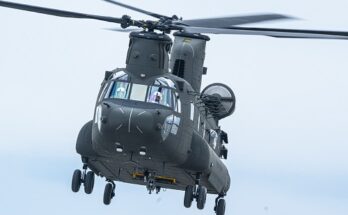The U.S. Air Force has awarded General Atomics a $263.4 million contract for an unspecified number of MQ-9 Reaper unmanned aerial vehicles. Although the 2019 fiscal year is well underway, the Air Force utilized FY17 and FY18 procurement funds for this contract. Work under this contract will be performed in Poway, California, and is expected to be complete by November 30, 2021.
The Air Force requested $388.2 million for 32 aircraft in its FY18 budget request. Congress cut $15 million from the program in FY18 due to cost growth for ground control stations, but provided full funding for all 32 aircraft.
The Air Force was previously planning to upgrade its Block 1 Reapers to the Block 5 standard, but this effort was canceled in June 2017. Instead, the Air Force will buy new Block 5 aircraft between FY19 and FY23. The service requested funding for eight aircraft in the FY19 base budget, and plans to buy another 25 aircraft between FY20 and FY23, not counting possible attrition replacements. The Air Force is still analyzing this procurement plan, and expects additional aircraft to be included in base budgets between FY20 and FY23, according to FY19 budget documents. Regarding the existing Block 1 Reapers, the Air Force is determining what components will need to be upgraded for the aircraft to remain operational.
The Air Force also requested funding for 21 Reapers as part of its FY19 budget request, but Congress cut five of those aircraft in the defense appropriations bill. Lawmakers also cut $80.1 million for the ground control stations, claiming that the funding was excess to need.
Shaun's deep-rooted interest in military equipment continues in his role as a senior defense analyst with a focus on the United States. He played an integral role in the development of Forecast International's U.S. Defense Budget Forecast, an interactive online product that tracks Pentagon acquisition programs throughout the congressional budget process. As editor of International Military Markets – North America, Shaun has cultivated a deep understanding of the vast defense markets in the United States and Canada. He is a regular contributor to Forecast International's Defense & Security Monitor blog and has co-authored white papers on global defense spending and various military programs.




